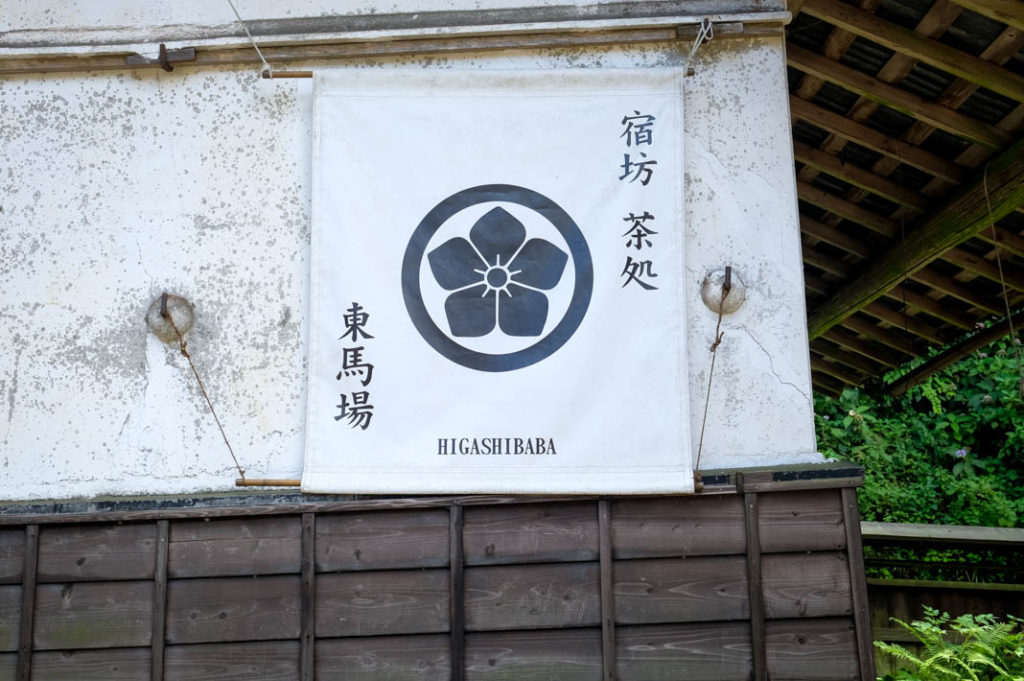If you’re looking for a mountain getaway not far from Tokyo, the venerable Mt. Mitake is a perfect choice. While most of the visitors to this wooded paradise come for hiking and outdoor activities, Mitakesan has long been on the map as a pilgrimage destination for pilgrims to visit its esteemed shrine. As a result, most of the accommodations are shukubo, or pilgrimage guesthouses. These are still run today by local Shinto priests who are members of the shrine’s religious community. For the ultimate Mitakesan accommodation, look no further than Higashibaba, the grand dame of them all.

A historic Japanese inn
Getting to Higashibaba is a short walk from the Mitakesan cable car station. From the station, the path initially skirts the forest before dropping you into the thick of the shrine priests’ village. From the moment you round the bend and come across the grandeur of Higashibaba, it is clear that this house is special. Built in 1866, the house has been deemed a Tangible Cultural Property of Tokyo and retains much of its historic charm, including the iconic thatched roof.
Once inside, bits of the house’s history can be seen everywhere, from the sliding shoji doors to the smooth cedar floors in the hallway and the more recent retro bathroom. Other notable features include Meiji-era ceramic toilets, ninja-style latches on the wooden window shutters, and a deep cellar underneath the house that was originally used to preserve food like a refrigerator. While traveling in Japan, a stay at a lovely, family-run guest house is typical; staying at Higashibaba is more akin to traveling back in time.
What to expect during your stay
Higashibaba only accepts one group of visitors of up to 10 people at a time. This means that your party will have the entire house to yourself, making for quite the exclusive Mitakesan accommodation. Rates include half-board, and the provided dinner and breakfast are thoughtfully prepared. Each lovely meal includes many local delicacies, including fresh-caught river fish and handmade konnyaku. As this is a traditional Japanese guest house, you will eat your meals at low tables on the floor, sleep on futons, and lounge around in the provided yukatas. Eating lavish meals dressed in a yukata in a rustic mountain setting: it doesn’t get more relaxing than this!
The house has been in the Baba clan since it was built by the 10th head of the house. The Shinto priest family will welcome you and see to your needs during your stay. Expect the okami, the house proprietress, to serve you delicious matcha and handmade sweets on your arrival, and if you’re lucky, the toshu, the head of the family, might play you his flute or show his sword, a family heirloom. Since the house is still the family home, you also might catch a glimpse of the youngest, cutest descendants of the Baba family crawling around as well.
As this is a historic Japanese guest house, there are a few things that should be noted about the property. Currently, the toilets lack plumbing and are drop-toilets, but trust us, they are the cleanest drop-toilets you will ever use. Also, the house can get quite cold in the winter and hot in the summer, but the okami and toshu will do their best to keep you comfortable. Despite these old-fashioned attributes, Higashibaba remains an extraordinary accommodation in Mitakesan.
Getting to Mt. Mitake
Getting to Mitakesan takes about 2 ½ hours from Tokyo, including transfer time at stations. From Shinjuku station, take the Chuo line to Mitake Station, changing trains at Ome. At Mitatke Station, transfer first to a local bus and then to the cable car that will take you to the top of the mountain. The journey costs ¥1,819. From the cable car station, it is about a 10-minute walk to Higashibaba.
Name: Higashibaba
Address: 54 Mitakesan, Ome, Tokyo
Open: check in 15:00, check out 10:00 (tea house open from 8:30-17:00)
URL: here
Post by Japan Journeys.